Business Model Overview: Greenhouse
The share of imported greenhouse vegetables in Russia is about 70% of sales. Its quality leaves much to be desired; Russian cucumbers and tomatoes are much tastier, cause less concern, and are in great demand among buyers. Sanctions and rising import prices forced retailers to turn to domestic producers. The absence of large greenhouse complexes gives a chance for the development of small businesses.
The consumption of greenhouse vegetables per inhabitant of Russia is approximately 11 kg per year. Of these, 4 kg are domestic products, and 7 kg are imported from abroad. In the last 10 - 15 years, they began to buy more, which is facilitated by the fashion for "healthy eating", approaching Western living standards. Therefore, the Russian greenhouse business is experiencing a rebirth.
In 2012, the State Program for the Development of Crop Production for 2013-2020 was adopted. It included the allocation of large-scale subsidies for greenhouses: up to 50% for equipment, and up to 30% compensation for electricity costs during the operation period until 2020. At the beginning of its introduction in Russia there were only about 2,000 hectares of greenhouses, most of which required reconstruction (for comparison: in Holland - 10,000 hectares).
This caused a boom in interest among large agricultural holdings, retailers, and investors. Sberbank, Gazprombank, Vladimir Potanin, the younger Abramovich, Mikhail Fridman and many others invested. Over the past two years, the construction of greenhouse complexes with an area of about 600 hectares and several large distribution centers has begun. However, public money is received irregularly, and the costs at the initial stage are very high. The payback period of projects is 7 - 10 years.
While the business giants are "swinging" and dividing state money, small and medium-sized producers are slowly occupying a niche that is freed from imports. Let us consider in more detail the components of successful indoor vegetable production. A greenhouse as a business is profitable if the entrepreneur:
- well studied local demand and found a permanent distribution channel;
- uses modern designs and agricultural techniques;
- solved the problem of energy intensity, which makes the business profitable.
Demand for vegetables and consumer preferences
Due to the harsh Russian climate, even residents of the southern regions receive vegetables "from the garden" for a maximum of 5 months, while for the rest they are available 2-3 months a year. A survey of buyers by the FDFgroup company, conducted in the summer of 2015 in Moscow, showed that residents of the capital buy fresh vegetables:
- at least once a month - about 90%;
- more than once a week - about 60%;
- buy occasionally - only 8% of respondents.
At the same time, cucumbers and onions are regularly purchased by about 60%, tomatoes - by about 56%, cabbage and greens - by 50% of buyers. And in winter, it is, of course, only vegetables grown indoors. According to the study, last year they were bought less than in 2014, which is certainly due to higher prices. The predominant places of purchase are shown in Figure 1.
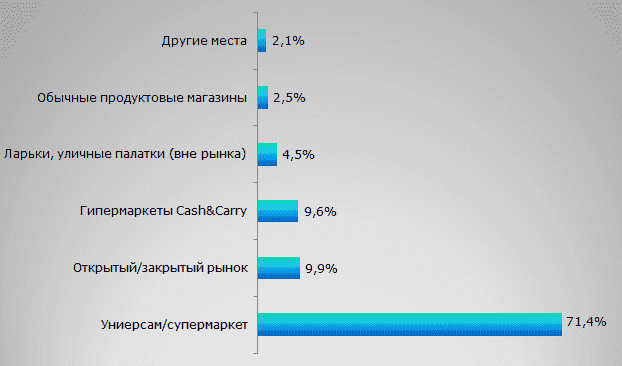
Interestingly, the quality of the goods is assessed differently: 94% of satisfied customers in the market, in supermarkets - 81%, and in ordinary stores - 77%. At the same time, the lowest indicators in terms of quality and assortment are in large chain stores "Magnit" and "Pyaterochka". Reason: imported goods - tasteless hard vegetables and fruits pumped up with special solutions, mostly from Turkey. But now they are under sanctions. By the way, both named retailers started building their own greenhouses.
Cucumbers and greens are in constant demand, and these are the easiest crops to produce, including by small businesses. The situation is more complicated with tomatoes. However, the demand for them is growing, and the lion's share of them was imported from abroad (Fig. 2). Therefore, the transition to the cultivation of tomatoes has good prospects.
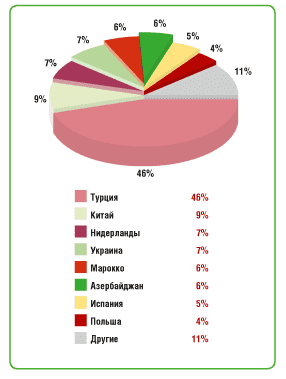
How modern greenhouse production works
The main task of the greenhouse is to create an artificial microclimate for growing vegetables all year round. This is much more expensive than open field production. Bulky metal structures covered with glass, with obsolete traditional heating systems, are no longer competitive. Modern greenhouse construction is determined by the following parameters.
Frame construction
Most greenhouses are a standard width gallery that can usually be extended in length. Roofs are gable, single-pitched or cylindrical. The frames are mounted from wooden arched structures impregnated with an antiseptic, with nail pressing; from a metal pipe, galvanized steel profile. Their service life is up to 25 years. They are installed on the foundation, piles, and sometimes just on the surface. Doors, transoms, vents, racks, less often partitions are provided.
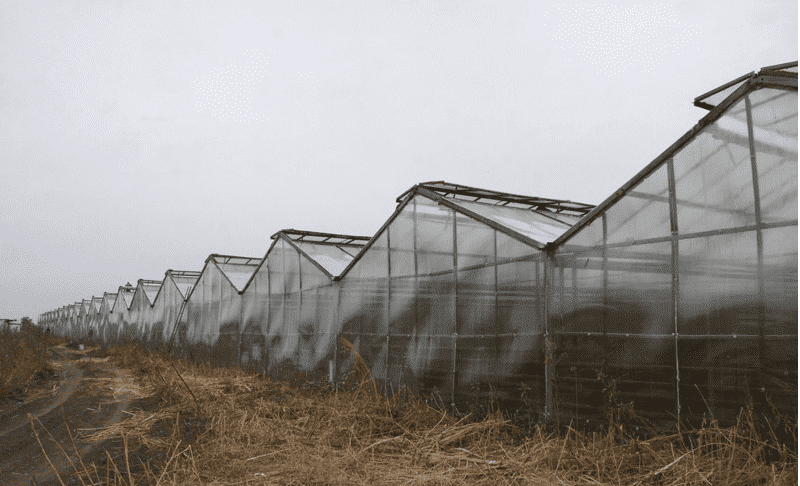
Cover material quality
Glass has been replaced by film coatings and polycarbonate. Polyethylene film is an affordable material, but its service life is up to 3 years. It perfectly transmits sunlight, thanks to which the greenhouse warms up well on sunny days. But a nighttime drop in temperature causes moisture condensation, which increases humidity and contributes to plant disease. These shortcomings are deprived of multilayer pimply-air films of a new generation. Cellular polycarbonate is a lightweight, durable, plastic material that can withstand up to 100 kg/m2, resistant to wind and hail. The cost is significantly higher than that of the film. It withstands winter temperatures down to minus 50°C and has good heat-insulating properties. Today it is the leader among hothouse coverings.
Heating System Efficiency
This is the most costly part of the process. The share of expenses for heating air, soil, water is over 40% in the cost of production. And the total energy consumption, taking into account additional lighting in the winter, ventilation in the summer, reaches 60%. This is the main reason hindering the development of greenhouse production. The annual growth in prices for gas and electricity is approaching 15%, and in just the last ten years, energy prices have more than doubled. For example, when growing the most profitable crop: cucumber, the cost of electricity when using conventional fluorescent tubes for winter lighting exceeds the cost of the lamps themselves by 2 times, and is comparable to a major overhaul (replacement) of the entire lighting system.
Reduce energy consumption by all available means, using energy-saving technologies; double wall covering, combination of materials, heat shields, active soil substrates that release heat during decomposition (linen fire). Many entrepreneurs build their own boiler houses with tanks, buy autonomous thermal power plants.
This is where small businesses win over large greenhouse farms. It is one thing to heat 5-10 greenhouses on 20 acres, and the scale of energy consumption on areas of 2 hectares and more is completely different. So, Russian craftsmen, in order to preserve heat, bury structures in the ground, sometimes to a meter depth; reducing the height, reducing the cost of covering the walls, heating, they use simple potbelly stoves, heating them with available local raw materials. To this we must add a variety of "know-how" in terms of creating heating systems of our own design and ways to connect to domestic energy networks (especially in household plots).
Entrepreneurs Viktor and Valentina Stolyarov from the village of Krasnoye, Tver Region, first grew seedlings of vegetables in greenhouses, and now they grow roses. The flower business turned out to be more profitable. Despite the fact that a gas pipeline is connected to the site, the greenhouse is heated with firewood. This is more economical, although more labor intensive.
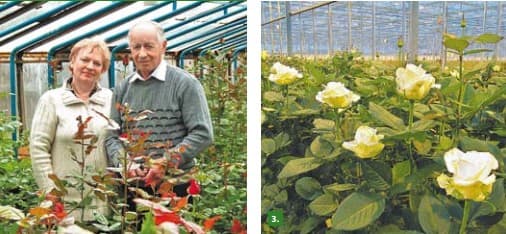
Climate control automation
Guaranteed yield depends on compliance with temperature and humidity. This is provided by irrigation systems, humidification, evaporative cooling, curtain screens. In addition, the drainage system of internal drains, the supply of solutions of fertilizers and pesticides, is being equipped. Ventilation is often natural, through a system of vents. All this is monitored by a system of automatic control sensors. Let us give an example of an average set of equipment for one greenhouse (Table 1).
Modern agricultural technology
First of all, it includes the selection of crops, high-quality seeds, modern soil substrates. Using the seedling method speeds up the process by 2-3 weeks, facilitates care, and increases efficiency. On one square meter of the greenhouse, 3-4 different vegetable crops can be grown during the year, depending on the season and demand. This requires constant fertilization and control over the composition of the soil, knowledge of agricultural technology, at the same time, allowing you to use the area to the maximum.
The most common crop: cucumbers. Their average yield is 22-35 kg/m2. They are followed by greens: onion, dill, parsley, lettuce and radish. But tomatoes are grown much less often. Despite the fact that their prices are high and the yield is good, they are more capricious and take longer to grow. Peppers, eggplants are practically not grown in small farms. It is believed that they are profitable only in industrial plants (from 20 hectares). However, below is an example that suggests otherwise.
Khakassia, Krasnoyarsk Territory. Farmer Nikolai Kutukov organized a profitable greenhouse business, starting from scratch in 2010, building the first greenhouse on his own. At first he grew only green onions, gradually switched to other crops. Now he has five greenhouses, grows cucumbers, tomatoes, sweet peppers, eggplants. Sells products through local shops and market. The area is remote, there are no major competitors nearby, so the entrepreneur plans to expand the farm.
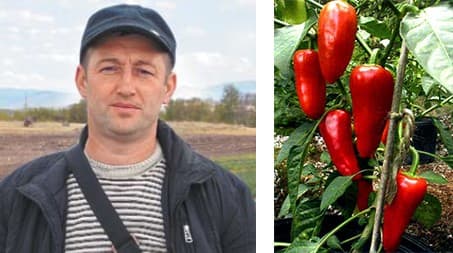
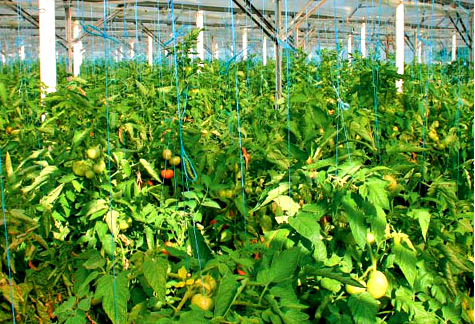
The biggest pain point for small businesses is finding a distribution channel. It all depends on local conditions. In the center and south of Russia, many small producers prefer to sell their crops to wholesalers. The latter process and pack it in their own distribution centers and resell it to retailers. Sometimes it is more profitable to open your own store (pavilion) if there is a demand and a target audience.
Profitability of greenhouse production
According to Aslan Devdariani, who has been developing the greenhouse business for more than 10 years, a greenhouse should give a profitability of at least 20% in order for production to break even. He grows only cucumbers, supplying them to the nearby city of Orsk, the area of greenhouses is 2 hectares. It is unprofitable to carry further. According to the Ministry of Agriculture, the company "Agroinvestproekt" average operating profitability of industrial greenhouse complexes in central Russia is 30 - 40%.
However, let's give an example of production on a personal plot in a small industrial city. Ilya Odintsov grows all the same cucumbers. With an average yield of 10 - 15 kg per 1 sq.m. (and it can be brought up to 25 kg), he receives about 1,000 rubles in two months, selling them to wholesalers at a price of 80 rubles per 1 kg. He has 10 greenhouses with an area of 40 sq.m. each. In total, in a good season, revenue reaches 400 thousand, net income - 200 thousand rubles. By the way, in February-March, cucumbers are sold in stores for 180 - 200 rubles.
conclusions
- There are more chances for the success of the greenhouse business in those areas where there are no industrial complexes, and the lack of vegetables is compensated by import supplies.
- It is more profitable to manufacture near an urban settlement, especially an industrial one, where the subsidiary, dacha economy proper is underdeveloped.
- The main task is to minimize energy costs; agronomic knowledge and special skills are required.
- The longer the period of use of the greenhouse, the more profitable it is. For example, growing cucumbers, greens in February - March; radishes, seedlings - in May; then - early tomatoes.




